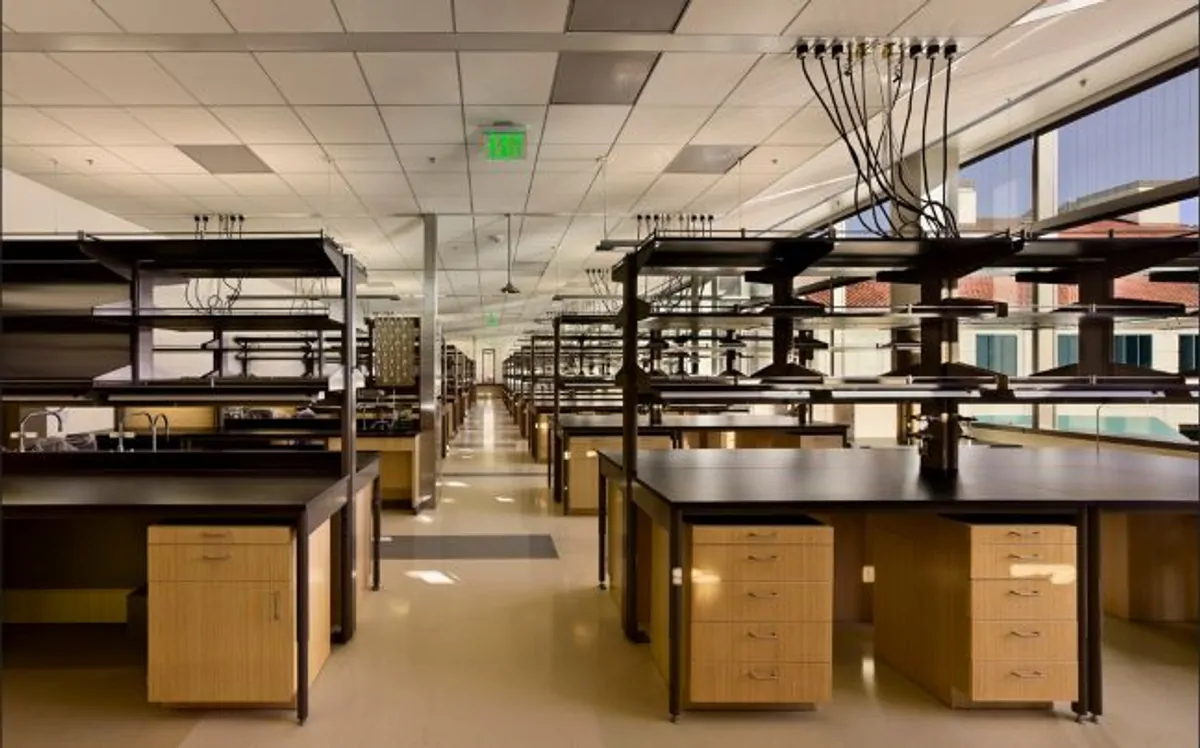Ensuring Speed to Market in a Science & Technology Construction Project
By Edward Gomez, PROJECT DESIGNER
In a crucial field like science and technology, ROI often hinges on how quickly activity can begin.
Science and technology construction projects tend to share an overriding priority—speed to market. For nearly every project that is creating a space to conceive a new drug, manufacture a medical device, or perform research and development of any kind, return on investment (ROI) often hinges on how quickly activity can begin.
James Awford, a principal with Western US-based contractor BN Builders, noted the importance of speed to market in a Q&A with GlobeSt.com: “When a drug or medical device is approved, the manufacturer has a short time to live in that space before the next competitor comes up with the next shiny new object,” he told the real estate publication. “Once they get the approval, they want the lab built out immediately because every day it’s not functioning as a lab, their competitors are getting that much closer. For developers of biotech who are focused on attracting tenants to market, if they can convince clients to move into one of their spaces, they want them in there quickly.”
This being the case, S&T building developers and owners far too often unwittingly sabotage their own urgent need for speed. They do this by failing to consult design professionals before making major decisions that influence project success, and by not recognizing all of the ways that these experts can help to accelerate the process. Having an architect or designer on board and contributing early can put them a step ahead in meeting their speed-to-market goals.
In what areas can investors, owners, developers, and researchers expect to benefit from the early—and continued—involvement of design professionals in major planning decisions for science and technology construction projects?
Location and local knowledge
Many projects have seen their ROI become DOA before the first line was drawn due to poor location choices. This is why it is critical to have someone in the room from the outset who knows the real estate landscape in the geographic areas being considered, who can gauge the benefits and drawbacks of various factors (e.g., rehab vs. ground-up construction), and who understands constructability of all types and sizes.
For instance, a developer building a biotech’s satellite manufacturing facility in Southern California made multiple missteps because they lacked the input of a trained architect during the planning stage. Their first mistake was settling on an abandoned warehouse to repurpose for a laboratory—had they been aware of the available research in the local area, they would have found several other existing buildings that could much more easily and cost-effectively accommodate the lab. Creative solutions come from creative conversations, and architects can be key to unlocking those possibilities.
They also misread the sentiment of local officials, which added substantially to the already-prolonged planning process. An architect or designer familiar with the local municipalities could have steered the developer through the minefield laid by the various departments. Having someone on the team who knows the community’s priorities and tendencies is priceless.
Read the full article here: Lab Manager
In a crucial field like science and technology, ROI often hinges on how quickly activity can begin.
Science and technology construction projects tend to share an overriding priority—speed to market. For nearly every project that is creating a space to conceive a new drug, manufacture a medical device, or perform research and development of any kind, return on investment (ROI) often hinges on how quickly activity can begin.
James Awford, a principal with Western US-based contractor BN Builders, noted the importance of speed to market in a Q&A with GlobeSt.com: “When a drug or medical device is approved, the manufacturer has a short time to live in that space before the next competitor comes up with the next shiny new object,” he told the real estate publication. “Once they get the approval, they want the lab built out immediately because every day it’s not functioning as a lab, their competitors are getting that much closer. For developers of biotech who are focused on attracting tenants to market, if they can convince clients to move into one of their spaces, they want them in there quickly.”
This being the case, S&T building developers and owners far too often unwittingly sabotage their own urgent need for speed. They do this by failing to consult design professionals before making major decisions that influence project success, and by not recognizing all of the ways that these experts can help to accelerate the process. Having an architect or designer on board and contributing early can put them a step ahead in meeting their speed-to-market goals.
In what areas can investors, owners, developers, and researchers expect to benefit from the early—and continued—involvement of design professionals in major planning decisions for science and technology construction projects?
Location and local knowledge
Many projects have seen their ROI become DOA before the first line was drawn due to poor location choices. This is why it is critical to have someone in the room from the outset who knows the real estate landscape in the geographic areas being considered, who can gauge the benefits and drawbacks of various factors (e.g., rehab vs. ground-up construction), and who understands constructability of all types and sizes.
For instance, a developer building a biotech’s satellite manufacturing facility in Southern California made multiple missteps because they lacked the input of a trained architect during the planning stage. Their first mistake was settling on an abandoned warehouse to repurpose for a laboratory—had they been aware of the available research in the local area, they would have found several other existing buildings that could much more easily and cost-effectively accommodate the lab. Creative solutions come from creative conversations, and architects can be key to unlocking those possibilities.
They also misread the sentiment of local officials, which added substantially to the already-prolonged planning process. An architect or designer familiar with the local municipalities could have steered the developer through the minefield laid by the various departments. Having someone on the team who knows the community’s priorities and tendencies is priceless.
Read the full article here: Lab Manager





